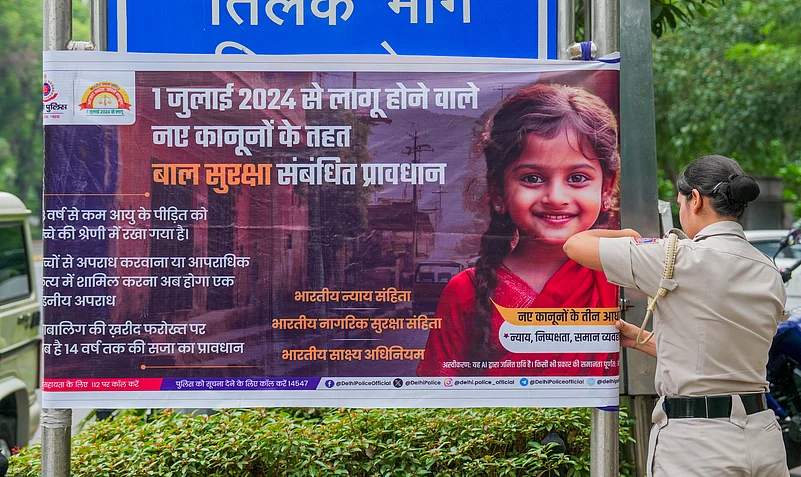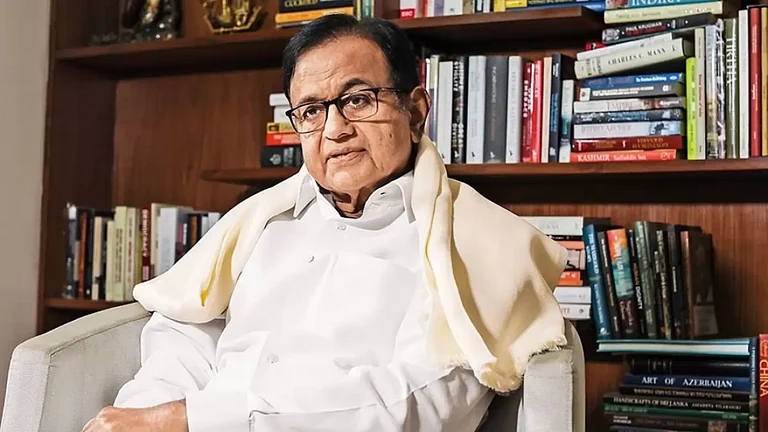India stands on the precipice of a transformative era in its legal landscape with the enactment of three landmark legislations: the Bharatiya Nagrik Suraksha Sanhita (hereinafter referred to as BNSS), the Bharatiya Nyaya Sanhita (hereinafter referred to as BNS), and the Bharatiya Sakshya Adhiniyam (hereinafter referred to as BSA) passed and enacted in the year 2023. These statutes are poised to replace the Indian Penal Code, 1860 (IPC), the Code of Criminal Procedure, 1973 (CrPC), and the Indian Evidence Act, 1872 respectively on 1st July 2024 as notified by the Government of India.
Welcoming New Criminal Laws: End Of Colonial Hangover!
India’s new criminal laws are part of a comprehensive legislative overhaul that seeks to modernize and streamline the criminal justice system, rendering it more efficacious, equitable, and aligned with contemporary societal needs.

Starting of colonial laws to govern Indians
The IPC, CrPC, and Evidence Act were enacted during the British colonial administration, and designed to serve colonial imperatives. The IPC, drafted in 1860 by Lord Macaulay who was the first law member of the Governor General’s Council, has been the cornerstone of India's criminal law, defining offences and prescribing penalties.
The CrPC, originally enacted in 1898 and revised in 1973, provides the procedural framework for criminal trials. Though a new Code was written in 1973, most of the provisions still remain to that of 1898 one.
The Indian Evidence Act, introduced in 1872, governs the admissibility of evidence in judicial proceedings. Notwithstanding numerous amendments, these laws have frequently been criticized for being outdated, rigid, and misaligned with the modern Indian socio-legal landscape.
New Laws for a New India
The Indian government’s proposal to supplant these colonial-era laws is by a necessity to confront contemporary challenges and inefficiencies. The BNSS aims to overhaul procedural aspects of criminal law, the BNS seeks to modernize substantive criminal law, and the BSA intends to reform evidentiary law. These reforms represent a profound jurisprudential shift, reflecting the aspirations of a modern, democratic India and adhering to the constitutional mandate of ensuring justice, equality, and the rule of law.
The BNSS is meticulously designed to simplify and expedite criminal procedures, thereby aligning with Article 21 of the Indian Constitution, which guarantees the right to a speedy trial. The key features of the BNSS include streamlining the process of filing FIRs to enhance accessibility and reduce bureaucratic red tape. By prioritizing the use of digital records, online filing, and virtual hearings, the BNSS aims to mitigate delays and enhance transparency, thereby upholding the constitutional value of efficiency in the administration of justice. Additionally, the BNSS enhances protection for victims, ensuring timely compensation and support services, and promoting a victim-centric approach. This victim-centric perspective aligns with the constitutional principles of justice and equality, ensuring that the rights of victims are adequately safeguarded.
The BNS proposes substantive reforms in criminal law, reflecting the evolving nature of crime and societal needs. It reclassifies offences to encompass cybercrimes, financial frauds, and gender-based violence, demonstrating a proactive approach to contemporary challenges. The BNS introduces a nuanced approach to sentencing, ensuring penalties are proportional to the gravity of the offence, with alternative sentencing options such as community service and rehabilitation programs. This proportionality in sentencing reflects the constitutional principle of fairness and justice. By decriminalising minor offences, the BNS aims to reduce the burden on the criminal justice system, enabling it to focus on serious crimes. Emphasising correctional measures, the BNS promotes rehabilitation and reintegration of offenders into society, marking a shift towards a more humane and rehabilitative justice system, as envisioned by the constitutional ideals of reformative justice.
The BSA brings significant changes to the law of evidence, adapting to technological advancements and procedural fairness. Recognizing the critical importance of digital evidence, the BSA includes comprehensive provisions for its admissibility and evaluation. Strengthening measures to protect witnesses from intimidation, the BSA ensures their safety and the integrity of their testimonies. Through the relevance and reliability of evidence, the BSA aims to prevent the admission of irrelevant or prejudicial evidence that could compromise the fairness of trials. Simplifying the process of evidence collection and presentation, the BSA seeks to reduce procedural delays and enhance the efficiency of trials. These measures align with the constitutional mandate to ensure fair trial procedures and uphold the integrity of the judicial process.
Why the need
While the transition of IPC, CrPC, and Evidence Act were conceived for a colonial context, the new laws are tailored to contemporary India, addressing modern-day crimes and societal needs. The emphasis on cybercrimes and financial fraud in BNS, for instance, reflects the digital age's challenges. The CrPC’s complex procedures often lead to delays and backlogs. In contrast, the BNSS aims to simplify and expedite processes, leveraging technology to improve efficiency and accessibility. The new laws robustly focus on the rights and protection of victims more than their predecessors, the older laws. The BNSS’s provisions for victim compensation and support mark a significant shift towards a more humane justice system.
Despite the potential benefits, the new laws face formidable challenges. Effective implementation necessitates substantial investment in infrastructure, technology, and training. Ensuring uniform application across India’s diverse and resource-constrained jurisdictions will be challenging. The emphasis on technology may exacerbate the digital divide, particularly affecting marginalized and rural populations. Ensuring digital literacy and access is critical.
The judiciary’s capacity to adapt to new laws and procedures is crucial. This includes training judges and legal professionals to comprehend and apply the new provisions effectively. Increased use of digital evidence and technology in law enforcement raises concerns about data privacy and potential misuse of personal information. Robust safeguards must be in place. Institutional inertia and resistance to change within law enforcement and judicial bodies could hinder effective implementation. Overcoming this requires comprehensive change management strategies.
The proposed reforms offer potential benefits. Simplified procedures and technology integration could reduce delays in the criminal justice process, ensuring timely justice for victims and accused persons. The modernization of substantive laws and evidentiary procedures enables the legal system to address contemporary challenges such as cybercrime while promoting fairness, proportionality, and rehabilitation in sentencing. Strengthening victim rights, protecting witnesses, and ensuring procedural fairness fosters public trust in the legal system. This could enhance accountability and credibility, crucial for upholding the rule of law. By decriminalizing minor offences and promoting alternative measures, the reforms optimize resources, redirecting them towards addressing serious crimes and improving rehabilitation outcomes. The incorporation of digital evidence frameworks and technology-driven solutions positions the legal system to adapt to future technological advancements, ensuring relevance and efficiency in the digital age.
The enactment of the BharatiyaNagrik Suraksha Sanhita (BNSS), Bharatiya Nyaya Sanhita (BNS), and BharatiyaSakshyaAdhiniyam (BSA) marks a milestone in India’s criminal justice system. These reforms have the potential to address long-standing issues of delay, inefficiency, and outdated legal provisions, aligning the system with contemporary needs and principles of justice.
The last word
These reforms could address longstanding challenges such as procedural delays, inadequate protections for victims and witnesses, and the need for more approaches to sentencing and rehabilitation. By integrating digital technologies, enhancing victim rights, and adapting to contemporary forms of criminality such as cybercrime, the new laws signal a commitment to not just catching up with global legal standards but also leading in innovative practices that uphold the rule of law.
Furthermore, the emphasis on rehabilitation and alternative sentencing under the BNS underscores a shift towards a more humane approach to justice, acknowledging that punitive measures alone may not suffice in addressing the complex social factors contributing to criminal behaviour. This holistic approach, coupled with strengthened safeguards for digital evidence and witness protection under the BSA, ensures that trials are fair, evidence is reliable, and witnesses are safeguarded against intimidation.
While challenges such as implementation logistics, judicial capacity building, and ensuring equitable access to justice remain significant, ultimately the success of these reforms will depend on collaborative efforts among policymakers, legal practitioners, civil society, and the public.
(Pawan Kumar is an Assistant Professor at the Amity Law School, Amity University, Noida. He reads law at the Indian Law Institute, South Asian University and the Chankya National Law University.
Kashish Jain is a Legal Researcher based in New Delhi.)
- Previous Story
 Elections 2024: Ashok Tanwar Joins Congress Again; Sehwag Endorses Congress Candidate In Haryana
Elections 2024: Ashok Tanwar Joins Congress Again; Sehwag Endorses Congress Candidate In Haryana - Next Story


























